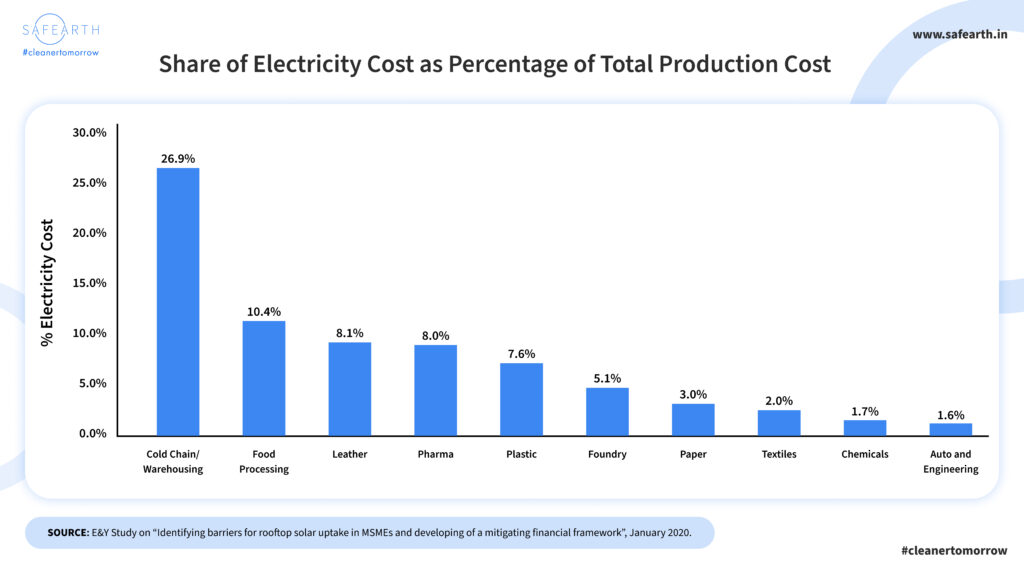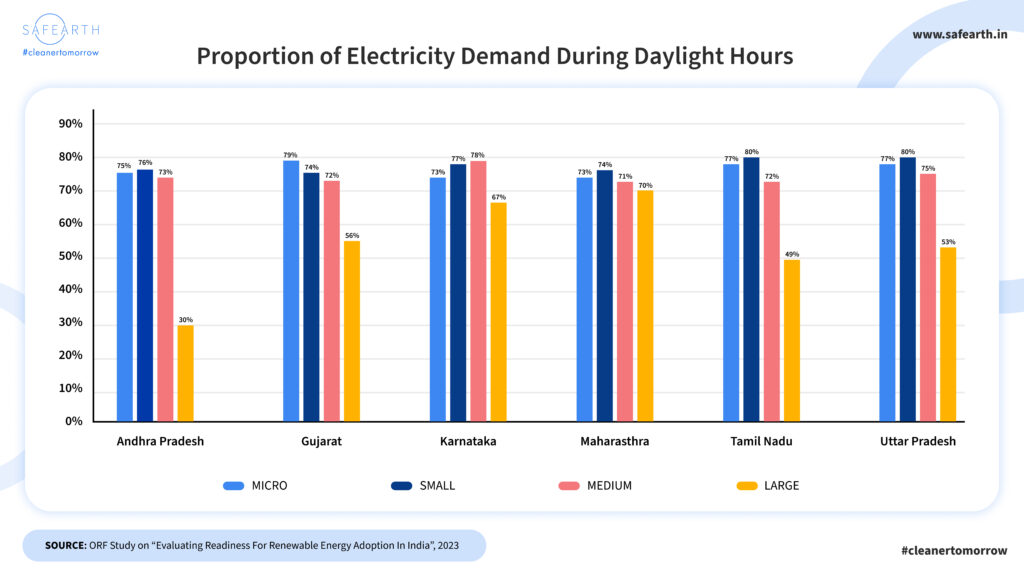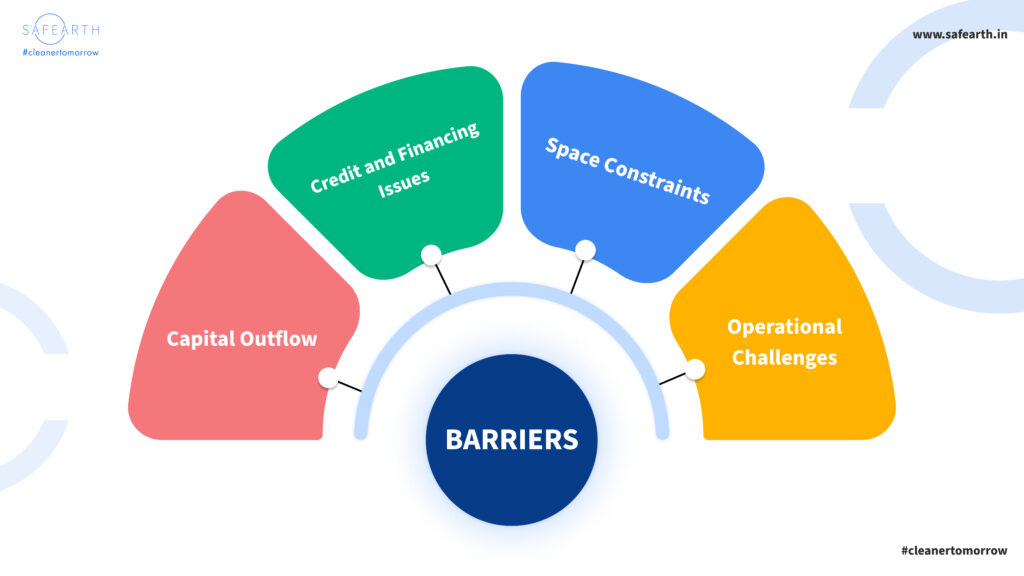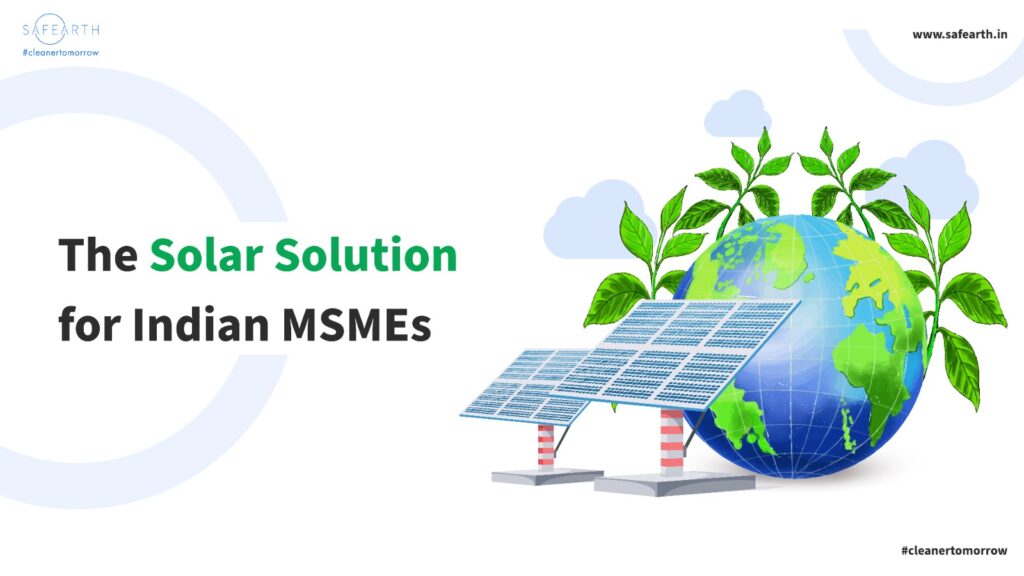Micro, Small, and Medium Enterprises (MSMEs) are vital to India’s economy, contributing 8% to the GDP and providing jobs for over 12 crore people. They are also significant in global trade, accounting for about half of India’s total exports. A study by the Bureau of Energy Efficiency (BEE) revealed that 180 energy-intensive MSME clusters in India consume around 22.5 million tonnes of oil equivalent (Mtoe) energy per year. This large energy consumption highlights the potential of utilizing MSME rooftops to meet India’s growing energy needs.
India’s Solar Ambitions and MSMEs
India aimed to generate 100 GW of solar power by 2022 through the Jawaharlal Nehru National Solar Mission but only achieved 63.3 GW by that year. As of March 2024, rooftop solar installations reached 10.8 GW, far below the 40 GW target. Currently, large commercial and industrial (C&I) customers dominate rooftop installations. With 60 million MSMEs in the country, this sector could potentially add 15 GW of solar power. However, MSMEs have only adopted solar power to a limited extent so far.
This article explores the benefits, barriers, and future of green energy in India, highlighting the key role MSMEs can play in this transition.
Why Should MSMEs Switch to Solar Energy?
Most MSMEs rely on grid electricity, which has rising tariffs and experiences frequent power cuts . A January 2020 E&Y study found that MSMEs spend 5-20% of their operating costs on energy. Switching to solar could significantly reduce production costs by lessening their dependence on grid electricity and allowing them to sell excess energy back to utilities.

Government Incentives and Policies
On June 14, 2023, the Ministry of Power issued the Electricity (Rights of Consumers) Amendment Rules, 2023, which includes the Time of Day (ToD) Tariff. Starting April 1, 2024, tariffs during solar hours must be at least 20% lower than the standard tariff for that consumer category. This incentivizes consumers to shift their energy usage to these hours. Since about 75% of MSMEs use power mainly from 9 AM to 4 PM, they can benefit from lower power consumption by installing solar plants.

Green Open Access
Another significant development is Green Open Access, allowing power users to buy electricity directly from private generators instead of relying on expensive grid power. Introduced in June 2022, the Green Open Access Rules (GOAR) promotes the generation, purchase, and consumption of green energy. Entities with a sanctioned load of 100 kW or more can now procure clean energy through open access. Many MSMEs face challenges installing rooftop solar due to technical and space constraints, making Green Open Access a viable alternative. Currently, only a few states have fully implemented GOAR. However, many are in the process of doing so, which could lead to wider adoption and more benefits for MSMEs.
Sustainability and International Markets
International markets are increasingly demanding sustainability in supply chains, requiring MSMEs to show they are reducing emissions and using renewable energy. Shifting to solar power can enhance their reputation for sustainability, leading to higher market value and more investor trust.
Social and Economic Development
Improved access to electricity through solar energy can transform social and economic development for MSMEs, especially in rural areas. It enables these enterprises to increase their income and create local employment opportunities, fostering overall community growth and sustainability.
Barriers for MSMEs in Adopting Solar Energy
Despite the potential benefits, MSMEs face several obstacles in adopting solar energy. Understanding these barriers is crucial for developing effective strategies to promote solar adoption within this sector.
Capital Outflow
One major obstacle is the cost of rooftop solar projects. The capital expenditure (CAPEX) model requires significant upfront investment, and MSMEs are often reluctant to allocate substantial capital for projects with long payback periods. This reluctance stems from insufficient knowledge about the actual financial benefits of solar projects.
Credit and Financing Issues
The operational expenditure (OPEX) or RESCO model allows consumers to spread the cost over the project’s lifetime. However, OPEX developers prefer MSME units with good credit ratings assessed by agencies like CRISIL, ICRA, and CARE. Unfortunately, many MSMEs lack credit assessments or have poor ratings, hindering their ability to secure financing for rooftop solar projects.

Space Constraints
Many MSMEs are situated in congested industrial areas where space is limited. Often, the existing roof space is unsuitable for solar installations due to factors such as improper building alignment, shadows from nearby objects, or usage of the roof for other purposes. Additionally, many MSMEs operate from temporary structures, making them hesitant to commit to long-term solar projects.
Operational Challenges
Further operational challenges include the absence of standardized quality control measures, low consumer awareness about the benefits of rooftop solar energy, varying regulatory frameworks, and lack of support from DISCOMs. Business instability and maintenance difficulties due to a lack of expertise also pose significant barriers.
Pathways to a Greener Future for MSMEs
While MSMEs face numerous challenges in adopting solar energy, there is a clear path forward. Policy changes, regulatory support, and economic reforms can significantly boost MSMEs. With these measures, MSMEs can play a pivotal role in driving India’s solar future, fostering both economic growth and sustainability. Here are two key recommendations for helping MSME’s. Here are two recommendations –
Financial Support and Incentives
Despite supportive central and state policies for overall solar development in the country, MSME sector continues to face financial hurdles that require dedicated government support to overcome. Economic incentives similar to those in the residential sector are needed to encourage adoption.
The government should prioritize support for micro-enterprises by offering small loans at affordable rates. Given that micro-enterprises make up 99% of the MSME sector, providing such financial assistance would result in more appealing payback periods and reduce the financial burden. Additionally, efforts should be made to attract more investments from national and international agencies to avail of Line of Credit (LoC) for projects.
Cluster-Based Approach
A cluster-based approach could also be beneficial. It is estimated that there are over 400 MSME clusters in India. Industrial MSME clusters could gather firms operating within a particular sector in a single location. A national cluster-based MSME rooftop solar program could assist MSMEs in selecting appropriate technologies, understanding financial implications, aggregating demand for solar developers, and providing financial guarantees to encourage OPEX-based models or Green Open Access. This program could also improve MSMEs’ creditworthiness and connect them with financial institutions offering low-interest loans for rooftop solar installations.
Conclusion
In conclusion, the world is united in the fight against carbon emissions, and India is leading this charge with ambitious targets. It is crucial not to leave MSMEs behind due to their financial and technical constraints. Thoughtful financial plans and policy reforms can help overcome these constraints, ensuring that MSMEs are active participants in our solar journey.

